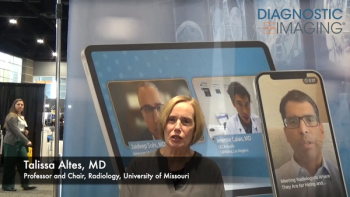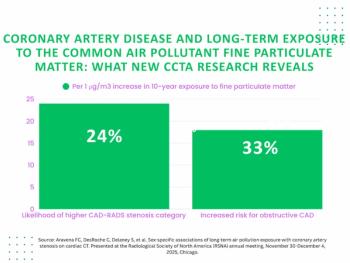
CMS approves kidney RFA reimbursement, other payment upgrades
The Centers for Medicare and Medicaid Services has approved a new CPT code to reimburse hospitals specifically for radiofrequency ablation of kidney tumors. CMS also provided new payment classifications and higher payment rates for existing RFA-related procedures.
The Centers for Medicare and Medicaid Services has approved a new CPT code to reimburse hospitals specifically for radiofrequency ablation of kidney tumors. CMS also provided new payment classifications and higher payment rates for existing RFA-related procedures.
Renal cell carcinoma is frequently detected in elderly patients whose age or comorbidities may make laparoscopic or open nephrectomy too hazardous. Percutaneous ablation offers a minimally invasive means to treat patients who are unsuitable for surgery, said Dr. Michael C. Soulen, chair of the Society of Interventional Radiology research education division.
"Specific RFA codes exist for liver and bone but not for kidney. This required use of an unlisted procedure code that was poorly reimbursed," Soulen said.
Percutaneous renal RFA received the designation CPT 50592. The ambulatory payment classification (APC) for the new code reached nearly $2400. CMS published its updated Outpatient Prospective Payment System rates in the Federal Register Nov. 2. They take effect Jan. 1, 2006.
Healthcare providers and industry officials had questioned current reimbursement levels on grounds that payment policies do not accurately reflect the technical complexities and true costs of RFA. For instance, the payment rate previously assigned to CT guidance for RFA (CPT 76362) was only $194, an amount proponents said did not reflect the time involved.
CMS did not agree with the proposed changes but conceded the time invested in CT guidance would be generally longer than most procedures assigned to the payment level in question (APC 0332). CMS reassigned CT guidance to a higher level (APC 0333) with reimbursement of $303. In addition, CMS said it will consider making CPT 76362 a major procedure in 2007.
"RFA requires time-consuming use of a CT scanner, at the expense of four to six well-paid diagnostic scans that could have been performed in the same time slot. Adequate reimbursement for the procedure is necessary for radiologists to be willing to make use of the limited resource of CT time," Soulen said.
CMS also upgraded liver and kidney laparoscopic RFA's current APC to $3790 each. The feds reviewed outpatient claims from 2002 to 2004 and concurred with RFA advocates that the median cost for these interventions had been notably higher than those for other procedures assigned to the same payment level.
Based on the same criteria, though, CMS rejected requests to change the APC assigned to percutaneous bone RFA (CPT 20982).
"CPT code 20982 was a new code for 2004, so we have one year of hospital data for this procedure. Given the information provided and the relatively low number of claims available for calculating the median cost, we are retaining it for at least one more year in APC 1557," said the
The payment classification system takes into consideration the professional and technical components for a given procedure and calculates rates according to a national average. Actual payments vary geographically.
CMS's decision does not imply medical necessity or dictate insurance industry reimbursement policies. The new codes, however, will enable physicians to submit claims with greater specificity regarding the care being delivered. This should, in turn, enable insurance companies to apply relevant clinical criteria and their associated reimbursement more precisely, said Susan G. Millerick, a spokesperson for Aetna's Clinical Policy Unit.
"Aetna bases policy determinations on evidence-based reports, peer-reviewed medical literature, guidelines from nationally recognized professional healthcare organizations, government agencies, and the clinical opinions of health professionals in the specialty involved," Millerick said.
The establishment of reimbursement rate codes does not, in fact, ensure uniform coverage by all carriers. But it is a step in the right direction, said Dr. Kamran Ahrar, an associate professor of interventional radiology at the University of Texas M. D. Anderson Cancer Center.
"Because of these codes there will be greater availability of services to patients all over the country," Ahrar said.
For more information from the Diagnostic Imaging archives:
Newsletter
Stay at the forefront of radiology with the Diagnostic Imaging newsletter, delivering the latest news, clinical insights, and imaging advancements for today’s radiologists.




























